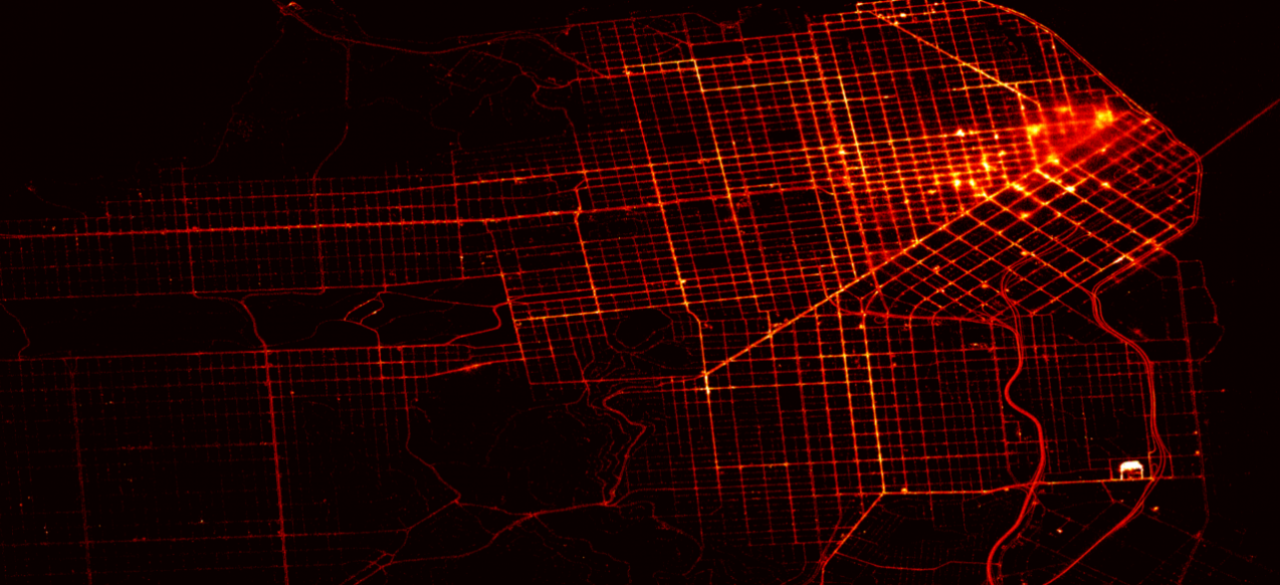Deep Reinforcement Learning based Optimization of Autonomous Vehicle Traffic

This image shows the density of taxi GPS tracks in San Francisco collected as part of the Mobile Millennium project. The project successfully used location information of taxis to produce travel time data for commuters. Now, the team is expanding the effort to use cohorts of cars to directly improve traffic in a scalable manner.
ABOUT THE PROJECT
At a glance
The aim of this research is to use state of the art (and practice) microsimulation methods in conjunction with recent breakthroughs in deep reinforcement learning in order to offer a generic urban traffic optimization solution. The project thus aims at leveraging the heterogeneous data streams produced by smart cars and smart cities (i.e. GPS based measurements of speeds and delays, static flow measurements with magnetic loops, Bluetooth re-identification, odometry data, raw video feed) in order to improve the dynamics of arterial traffic using a stochastic modeling framework.
This project will rely on two recent major breakthroughs in Artificial Intelligence. Trust Region Policy Optimization in Reinforcement Learning enables the learning of more complex policies and specifically Neural Network. In spite of the complexity of the problem, this technique guarantees our AI learns from previous experience. Another cutting edge technology will be used in the form of recurrent neural networks which enable attention learning in complex tasks. This automates focusing on an aspect of the problem prior to moving on to another sub-problem in a way that is very similar to how a human organizes a complicated task.
This project will rely on two recent major breakthroughs in Artificial Intelligence. Trust Region Policy Optimization in Reinforcement Learning enables the learning of more complex policies and specifically Neural Network. In spite of the complexity of the problem, this technique guarantees our AI learns from previous experience. Another cutting edge technology will be used in the form of recurrent neural networks which enable attention learning in complex tasks. This automates focusing on an aspect of the problem prior to moving on to another sub-problem in a way that is very similar to how a human organizes a complicated task.
| Principal Investigators | Researchers | Themes |
|---|---|---|
| Francois Belletti | Reinforcement Learning Stochastic Modeling |

